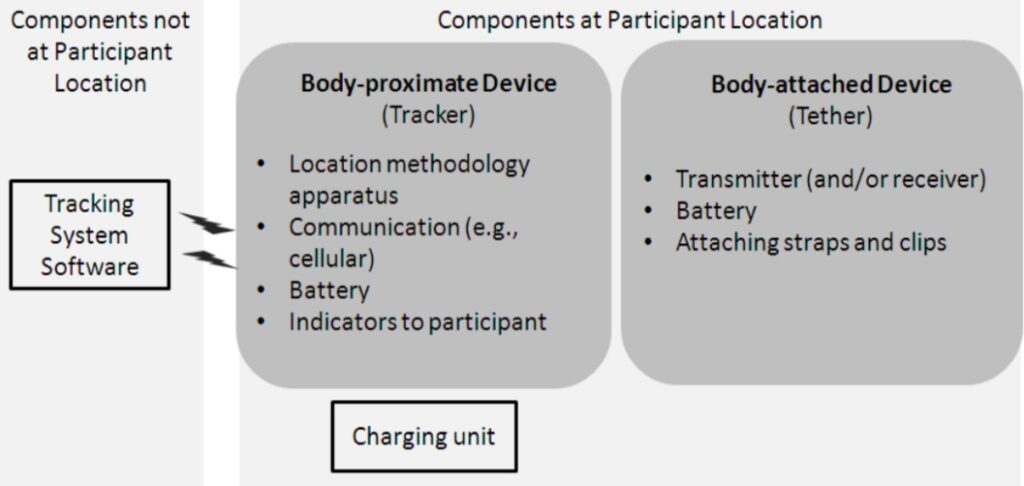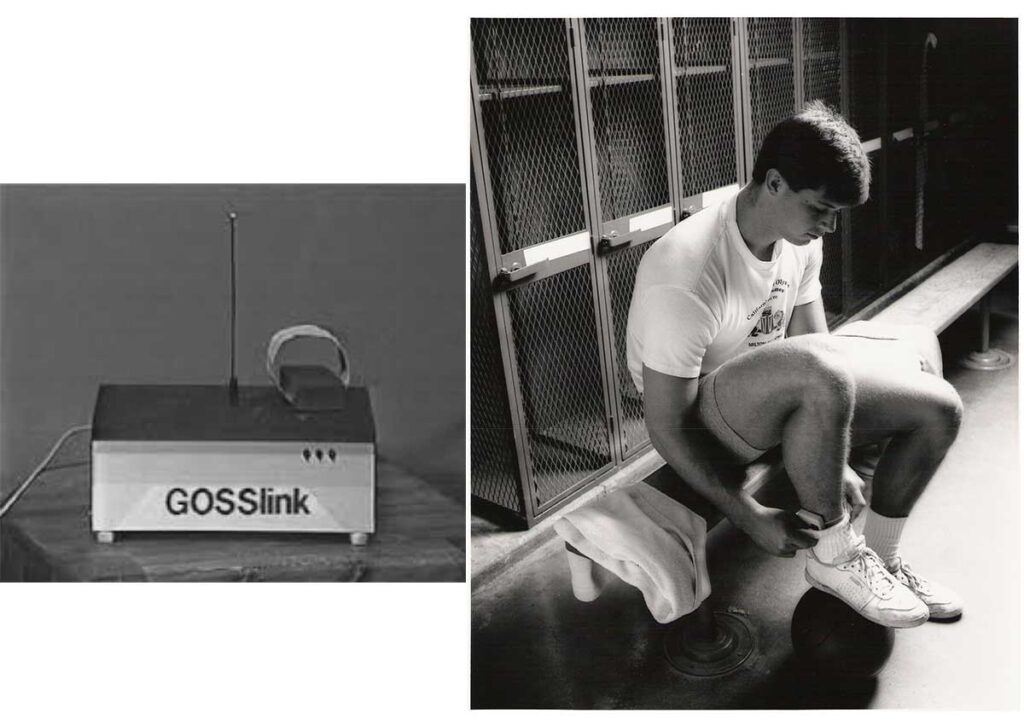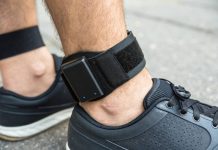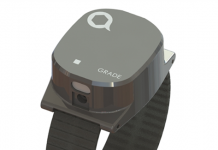Two-piece model consists of two pieces of equipment, a personal identification device (PID) which is attached to the ankle and the Portable Monitoring Unit (PMU) which is body approximate device for monitoring attached PID, or the Home Monitoring Unit (HMU) which is connected to the electricity supply in accommodation of monitored individuals.

Components of the body-proximate unit (PMU or HMU) typically include the location methodology apparatus, communication device, battery, indicators to the participant, and casing. Components of the body-attached PID typically include the RF transmitter/receiver, battery, attaching straps and clips, and casing. The PID contains a short range radio transmitter which sends a radio signal at random intervals of between one and ten seconds to any PMU or HMU which is within receiving range.
The body-attached PID as a personal identification device, is secured round the ankle (except in extenuating circumstances where this is not possible), and it is waterproof and cannot be removed without detection. An installation tool is used which simultaneously locks the strap around the monitored person’s ankle and activates the PID’s electronics in a single action. The signal the PID emits to the body-approximate device includes the serial number of the PID and its status (battery level, functionality, evidence of tampering).The strap contains a fibre optic cable which transmits a light signal from one side of the PID to the other which is interrupted if the strap is cut, creating a ‘tamper flag’ to alert the service provider that a tamper has occurred. The strap strength is also designed so that in the event of an emergency (such as the PID becoming attached to machinery) a clip failure would occur and the PID would be released. The batteries in the PID tags last approximately 12 months. There is a warning about battery life that appears after 10 months alerting the EM services provider that it will need to be replaced.

The body-approximate device which accompanies the tag is called a PMU or HMU. It can be installed in the specified premises or put nearby monitored individuals, and receives radio signals from the PID to enable it to determine whether the monitored person is present. The information received is processed and transmitted to the monitoring system. It relies on a SIM card and mobile phone coverage from the network provider.
Two-piece model of ankle monitor had had more than 40 years history since Judge Jack L. Love firstly used the combination of a transmitter bracelet and a nearby card-reading device to verify that a probationer was at a designated location. That two-piece model is named “GOSSlink” system come from National Incarceration Monitor and Control Services, Inc. (NIMCOS), which is established in 1982 by Michael T. Goss, a former Navy officer and a police-man.

The goal of NIMCOS (acquired by Boulder Industrial in 1985, later BI Inc.) was to manufacture devices and provide monitoring services. An ankle transmitter about the size of a pack of cigarettes was constructed capable of sending a radio signal approximately 100 meters. A stationary receiving unit in the offender’s residence was linked by telephone line to one of the county’s computers. Failure to get a signal from the residential unit indicated the possibility that the probationer had left the area.
Up to now, the mainstream vendors of two-piece model in market include BI (US), SCRAM system (US), Attenti (Israeli), G4S (UK), REFINE (China), Securus (US), SuperCom (Israeli) and etc. Most of European market, about 25% of U.S. and China market used two-piece model of offender tracking system.

The pros and cons of two-piece model products can be concluded as below.
PROS:
- Body-attached device is much more smaller and lightweight than one-piece model, it’s less complaints from wearers.
- RF ankle bracelet (PID) doesn’t need to be recharged, avoiding regular recharging at ankle or drain of battery issue for one-piece model. PMU or HMU is easy to be recharged or connected power supply.
- Simplified body-attached device to support disposable PID of cycle usage, without tremendous clean, disinfection and refurbishment works of one-piece model.
- Especially it’s idealistic for house arrest or curfew monitoring or low-risk offender monitoring.
Cons:
- Extra an alarm type for RF ankle bracelet being out of range of HMU or PMU.
- One more device than one-piece configuration with more complexity.














